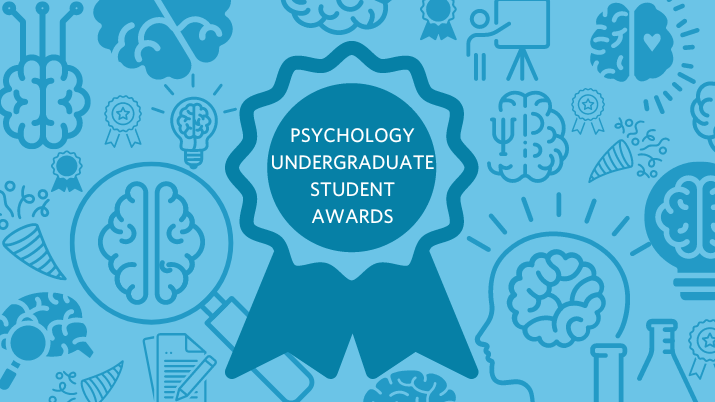For Leili Mortazavi, the benefit of completing her studies in UBC’s department of psychology has been the ability to conduct research as an undergraduate student. Since September 2017, she has been doing so in Dr. Catharine Winstanley’s lab at the Djavad Mowafaghian Centre for Brain Health (DMCBH) as part of the department’s Directed Studies program.
Mortazavi had hoped to present her research at the annual meeting of the Society for Neuroscience (SfN) in November 2018, but due to a travel restriction she is not able to join her colleagues in the United States to present her work. Leili Mortazavi was born in Iran, and is currently completing her fourth year honours undergraduate research program at UBC.
Over the past year, Mortazavi has worked closely with Dr. Mason Silveira, who recently completed his PhD, in Winstanley’s Laboratory of Molecular and Behavioural Neuroscience. Mortazavi has been working to understand the neural circuitry underlying decisions to exert cognitive effort using rats. Her poster for SfN’s Neuroscience 2018 event was intended to speak to this research, and to enable her to make connections with other researchers investigating similar cognitive processes in the global neuroscience community.
“We wanted to know how people make choices based on short-term or long-term rewards,” says Mortazavi. “For example, imagine that you need to sit down and study. In the long term, this choice will improve your exam outcomes, leading to higher probability of success. Do you choose to study now, knowing the benefit, or do you turn to the more immediate gratification of a television program or your phone’s social media notifications?”
“Our research is about understanding how people allocate their cognitive resources, and the processes behind their decision-making,”
This research provides insight into the mechanisms of motivation in people with neuropsychiatric disorders. Many psychiatric disorders are associated with defects in decision-making, including bipolar disorder, psychopathy, drug and gambling addiction, and suicidal ideation. Understanding the mechanisms underlying the decision-making process is a promising step toward identification of new targets of intervention in these disorders.
“Previous studies have shown that specific areas of the brain are involved in different aspects of decision-making,” says Mortazavi. “We studied the pathways between the anterior cingulate cortex (ACC) and the basolateral amygdala (BLA) to see what would happen if we disrupted the signaling pathway, deactivating ACC in one hemisphere of the brain and deactivating BLA in the other.”
The ACC is involved in executive functions, which include decision-making, reward anticipation, impulse control, and emotion. The BLA is involved in fear memory and response, and in avoiding pain or injury. As decision-making processes of the brain are not centralized in one region, different regions of the brain responsible for different aspects of motivation and behaviour.
In her study, Mortazavi used the lab’s rat Cognitive Effort Task (rCET). In the test, rats had to choose whether they wanted an easy or difficult challenge to earn sugary treats. They signaled their preference by pressing one of two levers, after which they had to spot a brief flash of light. Under the easy condition, the light was on for longer, so that it was easier to spot, and a correct response was rewarded with a single sugar pellet. If rats chose the harder option, the flash of light was harder to detect, taxing their ability to pay attention, but a correct response resulted in delivery of two sugar pellets. Most rats preferred to try and maximize the number of sugar pellets delivered, and frequently opted for the harder challenge. In contrast to these “worker” rats, “slackers” preferred the easier option, even though they were just as good at detecting the briefer flashes of light as their harder-working counterparts.
“We found that when we unilaterally inactivated ACC and BLA, the rats shifted away from their preferred choice,” explains Mortazavi, “which is to say that rats who had previously demonstrated worker-like thinking picked the easier task, and rats we had identified as “slackers” picked the more complicated task.”
In the study controls, both regions in a single hemisphere were disconnected.
“It was interesting that in our controls, the results were similar, if less profound; we’re now theorizing that the change in the rats’ behaviour may be specifically tied to the BLA, regardless of hemisphere,” says Mortazavi. Given what we know about the contribution made by the BLA to cognition, this may indicate that a major factor driving individual differences in willingness to try more cognitively demanding options is the degree to which individuals find exerting cognitive effort aversive, or fear failure if they try something more difficult.
Mortazavi was looking forward to presenting her research, and engaging in conversations with other researchers that might have informed the next steps in her ongoing studies.
“I want to pursue research, and was hoping to participate in the poster presentation, professional workshops and networking events at SfN as part of my preparations to apply to graduate programs,” says Mortazavi. “Working with Dr. Winstanley and Dr. Silveira as my mentors, has really reinforced my decision to stay in research; a career in the lab feels like the right choice for me.”
This article was originally published by the Djavad Mowafaghian Centre for Brain Health. Read the original article.
The Department of Psychology and our colleagues at the Djavad Mowafaghian Centre for Brain Health (and elsewhere on campus) are disappointed that some members of our community will not be able to attend Neuroscience 2018, the annual meeting of the Society for Neuroscience. We stand with our students and faculty, and are proud to support and promote their research.


